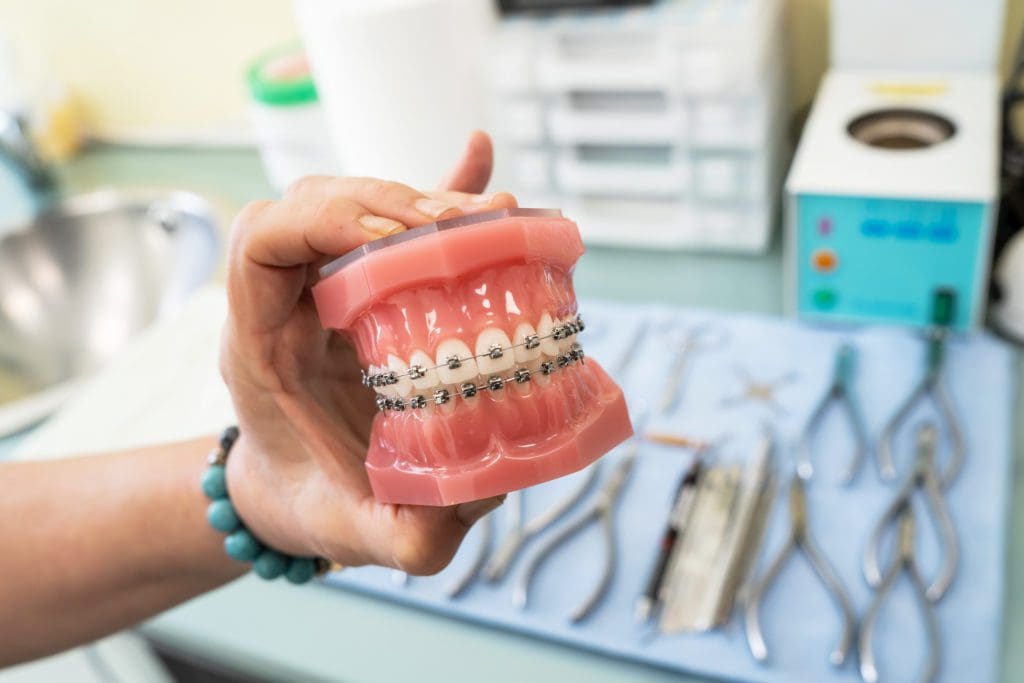Expert Cumming Braces and Aligners: What to Know Prior To You Go to
Expert Cumming Braces and Aligners: What to Know Prior To You Go to
Blog Article
Comprehensive Overview to Orthodontics Procedures for Dealing With Oral Misalignments
Recognizing the intricacies of each treatment, including their devices, benefits, and possible downsides, is critical in making educated decisions concerning one's orthodontic treatment. As we browse through the comprehensive overview to orthodontic procedures for correcting oral imbalances, the detailed details of each technique will unravel, dropping light on the course towards a harmonious and useful oral alignment.
Orthodontic Procedures Review

Normal changes and surveillance are vital components of orthodontic therapy to guarantee progression is on track and to make any kind of necessary modifications along the means. By undertaking orthodontic procedures, people can not only attain a straighter grin but likewise improve their total oral health and wellness and feature.
Standard Braces: Just How They Work
When considering orthodontic therapies for dental misalignments, typical dental braces stand out as a tried and true technique for fixing teeth positioning. Conventional dental braces include brackets, cables, and bands that interact to apply continual stress on the teeth, gradually moving them right into the wanted placement. The braces are connected to the teeth making use of an unique adhesive, and the wires are threaded via the braces. By changing the stress of the cords, orthodontists can regulate the instructions and force applied to each tooth, directing them into correct positioning over time.
As pressure is used to the teeth with the dental braces, the bone surrounding the teeth is improved to sustain the brand-new tooth positions. People will require normal adjustments at the orthodontist's workplace to make certain the braces continue to apply the right pressure for efficient teeth motion.
Unnoticeable Aligners: Disadvantages and pros
These clear, custom-made trays are virtually unnoticeable when put on, making them an attractive choice for individuals seeking a much more visually pleasing orthodontic treatment. People can eliminate the aligners prior to eating or cleaning their teeth, reducing the risk of food obtaining stuck in the device and streamlining the cleansing procedure.

Surgical Orthodontic Options
Surgical interventions in orthodontics present viable choices for resolving intricate dental imbalances that may not be efficiently settled through conventional orthodontic treatments. While traditional braces and undetectable aligners can correct numerous orthodontic issues, specific instances call for medical intervention to achieve ideal results. Surgical orthodontic options are commonly recommended for serious malocclusions, significant jaw discrepancies, and situations where the underlying bone framework requires adjustment to accomplish proper alignment.
One common medical orthodontic treatment is orthognathic surgical treatment, which includes rearranging the jaws to fix functional problems such as difficulty talking or eating. This surgical procedure is often performed in cooperation with an orthodontist that aids align the teeth before and after the procedure. Surgical orthodontics may likewise involve treatments to subject influenced teeth, remove excess gum tissue, or improve the jawbone to create an extra unified facial profile.
Prior to considering medical orthodontic alternatives, patients undertake a comprehensive examination to identify the requirement and prospective advantages of such interventions. cumming orthodontist. While surgery may appear challenging, it can dramatically boost both the function and visual appeals of the smile in cases where standard orthodontic treatments fall short
Retainers and Post-Treatment Treatment

Post-treatment treatment entails complying with the orthodontist's directions vigilantly. This might consist of proper oral health techniques, attending follow-up appointments, and using the retainers as suggested. Failure to conform with post-treatment treatment directions can result in relapse, where the teeth progressively move back in the direction of their initial positions. Consistent retainer wear, great dental hygiene, and normal oral check-ups are important for keeping the outcomes achieved via orthodontic surgery and making certain the lasting stability of the dealt with oral alignment.
Final Thought
In final thought, orthodontic treatments provide different options for dealing with oral misalignments. Traditional dental braces use steel braces and cables to move teeth into proper placement. Undetectable aligners supply a more very discreet option but might not be suitable for all cases. Surgical orthodontic choices are offered for extra extreme imbalances. Retainers are generally utilized post-treatment to keep the brand-new placement. In general, orthodontic treatments can properly improve oral wellness and aesthetic appearance.
As we navigate via the extensive overview to orthodontic treatments for dealing with Website oral imbalances, the elaborate information of each technique will certainly unravel, dropping light on the path toward a unified and functional dental alignment. - invisalign
One of the most usual orthodontic treatments is the use of dental braces, which are composed of steel braces and cables that apply mild pressure to progressively shift teeth right into the wanted setting.When thinking about orthodontic treatments for oral imbalances, typical braces stand out as a time-tested method for fixing teeth positioning. In addition, undetectable aligners might not be suitable for complex orthodontic issues that need more substantial teeth activity, as they are generally recommended for light to moderate cases. Retainers are personalized orthodontic tools designed to hold teeth in their corrected placements after the completion of orthodontic therapy.
Report this page